I arrived in Darwin late on Saturday night and checked straight into my hotel. The following day I had breakfast at a very nice cafe in the town centre called Four Birds before hiring a car. After a few administrative difficulties, I secured another little car. I had a short drive around but realised I would see more on foot, so I parked at the hotel and walked along the esplanade to the waterfront. There is a long narrow park all along the harbour edge, which is very nice to walk through. It was full of birds. I saw kites, a rainbow bee-eater and scrub fowl, as well as ibises.
It was very hot, and a section of the walk was not very nice as there is development going on, but once at the waterfront I discovered that a section of water which is walled off (presumably to keep the crocs out) was hosting an open water swim. Lots of swimming-hatted heads swam around marker buoys, closely watched by lifeguards and marshals. The shallower area behind it and its surroundings were full of families lying on the grass and cooling off in the water. There are smart flats surrounding the waterfront, which is a slick contrast to the town centre which is full of bars, hostels and adventure holiday companies servicing the backpacker market.
I set off towards Kakadu the following morning. I realised I would soon need another SD card, so I found Darwin’s camera shop in the morning, only to find it was closed for a family emergency. The note on the door mentioned a shop in nearby Palmerston, so I decided to try that on the way. I established that it was a straightforward drive and elected not to hire a GPS, so I was slightly nervous about getting lost, but it was as easy as it looked on the map and I was on the right road very soon. In contrast to much of my Aussie driving to date, this was easy; on a straight, well-maintained road, in daylight. My detour at Palmerston was a waste of time, as it has no centre (at least not that I could find) and just seemed to be a collection of shopping centres linked by roundabouts. I had no joy locating a camera shop.
As I had already burnt a fair amount of daylight, I decided I would not stop to try to photograph the huge, cathedral-like termite mounds not far outside Darwin, thinking I could get them on the way back. This was another mistake, as it was dark when I returned to Darwin several days later.
I stopped at Fogg Dam, which is an area which was set aside for rice growing which did not prove a success (I understand this was because birds kept eating the crop) and which has now been left to become a bird sanctuary. There I saw scores of whistling ducks, magpie geese, jabirus, egrets, ibises and little terns which skimmed the water. I drove slowly across the dam wall, stopping to shoot occasionally from the car, as the risk of crocodiles means you cannot walk across. At the far end is a hide, which was a pleasant spot to sit for a few minutes and chat about camera lenses with a Russian man, while watching the birds.
Just a bit further down the road is the Windows on the Wetlands. This has a little display about the flora and fauna of the wetlands, as well as a viewing platform with a lovely view over the area. I spotted a kangaroo hopping through the trees just below the platform. It never came out into the open, and was gone by the time I climbed down. The woods there are full of birds, including a beautiful rainbow bee-eater, as well as lots of butterflies.
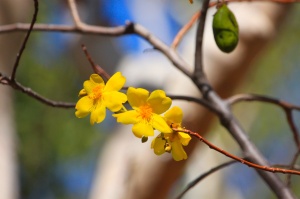 I decided not to take a jumping crocodile cruise at Adelaide River. I am not a fan of feeding wild animals, and attracting them to boats seems harsh on local fishermen, especially as fishing is such a popular pastime in this part of the world. I pressed on and stopped at the Bark Hutt. This is a well known roadhouse, and may be worthy of a brief look, but was not worth the hour or more I spent there! I ordered a sandwich which took forever to appear, and was just an indifferent cheese and salad on white bread.
I decided not to take a jumping crocodile cruise at Adelaide River. I am not a fan of feeding wild animals, and attracting them to boats seems harsh on local fishermen, especially as fishing is such a popular pastime in this part of the world. I pressed on and stopped at the Bark Hutt. This is a well known roadhouse, and may be worthy of a brief look, but was not worth the hour or more I spent there! I ordered a sandwich which took forever to appear, and was just an indifferent cheese and salad on white bread.
After that prolonged stop, the speed limit increased to a speedy 130 km per hour. I do love the Aussies. None of these boring numbers preferred by everyone else, like 100 or 120 kph. No, they like 110 and 130. As I sped along, I entered Kakadu. A small bush fire was burning at the entrance, and lots of people stopped to take pictures of the fire. I passed a tiny wallaby by the side of the road, imploring him not to move into my path as I went by. I eventually stopped at Mamukala, where there is a lovely platform for watching the birds on the water there. There actually were not a lot of birds there that day, just a few ducks, a darter and a little comb-crested jacana. As well as the water birds, I snapped a beautiful broad-billed flycatcher. I started to do the three kilometre walk there, before I realised it was probably a bit late in the day to start a hike in an area where crocs have been seen on the trail, so I turned around and went on to the little town of Jabiru to check in to the crocodile shaped hotel that was to be my home for the next two nights. Jabiru exists to service the local uranium mine, but may start to struggle as the mine switches to more fly in, fly out workers. Tourism exists mainly in the dry season, so local businesses will start to struggle in the Wet. As I drove along I could see evidence of the impact of the Wet. There are signs everywhere warning of floodways, and depth markers by the side of the road.
Right outside my room a blue-faced honeyeater was foraging in a tree only feet away, enabling me to take some nice pictures even though the light was fading.
The following day I was collected for a safari to the aboriginal-owned area of Arnhem Land. The whole of Kakadu is owned by the traditional owners, but parts are let out as a national park, parts are subject to mineral leases (uranium is found here) and parts are exclusively owned by the traditional owners. A permit is required to enter these areas, so it is easiest to access them through a tour which will ensure the necessary permits are obtained and adhered to. After crossing the river at Cahill’s Crossing, where many a vehicle has been washed away, we entered Arnhem Land. On the way, our guide, Sab, pointed out areas of interest, such where a boy was recently taken by a crocodile. He also pointed out which areas were mineral concessions, which were national park and which were owned by the traditional owners exclusively.
We stopped at the Injalak Cultural Centre at Gunbulanya to see the local men paint and the women weave. There was only one artist in action, so there was not much opportunity to compare styles. There were four women weaving baskets under a tree. The oldest explained the techniques, using the pandanus leaves and vegetable dyes. When she was finished her explanation she politely invited us to move on, by stating that that was all she had to say.
We then collected Gary, who was to be our Aboriginal guide for a climb up Injalak Hill, or Long Tom Dreaming. He had us all introduce ourselves with our names and where we were from. When I explained that I lived in London but was originally from South Africa, he pointed out that there were many black fellas there. Yes, indeed, was my response. This was to be a bit of a theme, as he continually pointed out that he was just a simple black fella. We set off on a hot steep climb. Every 30 metres or so we stopped for Gary to tell us a long story which he implored us to share with our families. I must admit that the point of many of his stories escaped me, but it was nice to find a shady spot and listen to his soft voice. He did ask us to ensure that we threw chicken and fish bones on the fire after eating, rather than let them go to landfill, where their sharp edges might hurt someone. He chose a bad victim to illustrate his tale, as he asked a man who was allergic to fish whether he enjoyed eating barramundi. I think he planned to ask him what he did with the bones after eating it next, but of course this man had to say he did not eat fish. Gary was not thrown for long, though, and continued his story.
We eventually came to an overhang which was painted with rock art. The shelter under the overhang had little hollows which were used for grinding food. It was hard to work out how old it was, as for Gary things either happened before or after he was born. I think he must be bemused by the white fellas’ obsession with dating things. It did seem that this shelter had been used for a long time, based on all the layers of overlapping paintings. After listening to a number of stories about the art, including a warning to stay away from trees during lightening storms in case the Lightening Man eats us, we moved further up the hill. We came to a cave where Gary showed us some of the tools used for rock art; the brushes fashioned from twigs and the ochre and clay used as paint. Afterwards he pointed out a hand painted on the wall. Taking a torch, he shone a light behind a large rock and illuminated a set of bones crammed in burial behind the rock where the hand was pointing.
We finished the climb with another steep ascent, followed by a scramble through narrow tunnels until we emerged at the top of the hill where Sab waited with sandwich fixings for lunch. From there we enjoyed views over Arnhem Land, including a view of Gunbulanya and the billabong on which it sits. Sab seemed remarkably relaxed about taking a group up a steep climb in 30 degree heat, with an average age of well over 50 before sitting them at the top of a cliff for lunch. We all made it up and back more or less intact, other than one poor man who managed to impale himself in the shin with a large twig. He had to go to the clinic in Jabiru to have it removed. On the way back past the burial site, Gary gave the bones some water and asked us all to bid them farewell by saying “bobo” – goodbye in the local language. At the bottom of the hill Sab handed us welcome frozen face towels, before taking us back to the Injalak centre to purchase art from the shop. Although there were many beautiful pieces, I cannot carry anything more on my travels, so I kept my money firmly in pocket, even though some of Gary’s work was on display.
As we drove back to Jabiru, I did wish we could have stopped for pictures, as we saw a number of brolgas (a large crane) near the road, but we sped past them. Unfortunately those were the only brolgas I saw, even though they are common in Kakadu. I think perhaps they had not yet arrived in great numbers in the park.
The following day I had to wait in Jabiru for the supermarket to open so that I could buy the SD card I had failed to find in Darwin. Once purchased, I set off for Nourlangie Rock, another place where there is rock art. I was just in time to hear a fascinating talk by one of the rangers about the archeological dig that has taken place there at the Anbangbang Shelter. The tools and hunting techniques of the Aboriginal people only changed when the landscape (and therefore the animals found there) changed, over tens of thousands of years. The ranger passed around examples of the sorts of tools found there. She explained that the aboriginal people would leave the tools in the shelter so that they would be available when needed. As a result, she asked us not to remove any rocks from the park. She did say that they got a few letters every year enclosing rocks collected in Kakadu which were bringing the collector bad luck.
Further up the trail from the shelter there is more rock art, depicting the unpleasant Nabulwinjbulwinj who eats women after hitting them over the head with a yam. I hate when that happens.
Also depicted is the Lightening Man with his wife and family. His children are the brightly coloured grasshoppers which precede the start of the rains. The trail continues past the paintings to a lookout, showing the distant and forbidden area where Namarrgon, the Lightening Man, resides. He cannot be disturbed as he sits and waits for the storms of the rainy season.
I headed back to the Anbangbang Billabong, but the walk there was closed, perhaps as buffalo had been spotted there. I satisfied myself with a short stroll before heading off towards Cooinda where I would stay that night.
On the way I stopped and climbed to the Mirray Lookout. Although only about 800 metres up the hill, this was a very hot and steep climb, particularly lugging my camera gear. At the top is a platform with partially obscured 360 degree views over Kakadu. I am not sure it was worth the exertion and battling many flies on the ascent! Although it looked like the trail was shaded, it was only partial shade, and the rocks reflected the heat back fiercely.
Since I drank all my water following that climb, I went to Cooinda, with the air conditioning on maximum, to check in and get some more water. I saw that there was a photographic cruise available, guided by a photographer called Paul Arnold whose work I had seen at his gallery in Darwin. When I expressed interest in his trip, the receptionist summoned him, and he immediately told me I would get much more from his small trip than the larger cruise I was booked on for the following day and told me to swap to his trip. After much debate, I was told I could not swap, so I booked his trip for the following afternoon in addition to the morning cruise I already had booked.
All there is in Cooinda is the small resort, with a shop, a petrol station, an informal restaurant, rather bizarrely a fine dining restaurant, some small cabins (of which I had one) and a campground. After settling in, I went down to Yellow Water (just a few kilometres away) to do the short walk there, after discovering that the walk from Cooinda to Yellow Water was closed. There is a boardwalk there about 600 metres long next to a narrow channel. Unfortunately it is not great for photography in the afternoon, as from the boardwalk you are looking straight into the sun across the water. As I was photographing a forest kingfisher, some young men just ahead pointed out a mid-sized crocodile swimming silently past. Occasionally a barramundi would splash or the kingfisher would pounce on a dragonfly skimming the water, but otherwise it was hot and still. At least until the mosquitoes started to bite! From the jetty, I could see lots of birds, including the graceful jabiru. Owing to the number of mosquitoes ignoring the repellent I had liberally sprayed on, I decided not to wait for the sunset, which had been my original plan.
Back at Cooinda, after a much needed shower, I joined the long queue for dinner at the informal outdoor restaurant. I made a friend, Catherine, in the queue, who invited me to join her family for dinner. Her husband, Richard, and two teenage boys were very pleasant company, and I am sure I earned my huge cheesy pizza on the Mirray lookout walk earlier that day! Despite our mutual scepticism, the fine dining restaurant was reasonably full as we walked past for an early night, as we all had a sunrise cruise booked for the morning.
Before dawn I waited with about 80 other people for the shuttle down to Yellow Water for the sunrise cruise. I was on the smallest of the three boats which set off. After my discussion with Paul the day before, my expectations were low, but the guide, Belinda, was very knowledgeable about birds and the opportunities for photos were not bad, particularly when things were on my side of the boat. As well as crocs, we saw many, many birds, including three species of kingfisher, a bush full of crimson finches, nankeen or rufous night herons, and two beautiful white bellied sea eagles sitting side by side in a tree.
The ticket included a cooked breakfast back at Cooinda, where my 100-400mm lens attracted some attention. There did not seem to be many people with long lenses. I had a chat with a man from Adelaide who was planning an African trip and thinking of upgrading his 300 mm lens. I told him he would not need a 400mm lens in Africa unless he was into birds.
I set off to do a walk but realised that to get there I would have to cross a river in my hatchback. In crocodile infested country that did not seem wise, so I headed back to Cooinda. It was just as well, as I had muddled my dates and was supposed to have checked out! It was the first time in more than two months of travel that I had got confused about my itinerary. I quickly packed the car, and found a shady spot to check my photos, eschewing the nearby cultural centre on the basis that it was just too hot, before my afternoon trip with Paul.
I was his only customer, and we set off with Belinda, my guide from the morning trip, driving the boat. It was very hot and the sun was strong, which made me worried that I would not get any shots. Despite this, we managed to find some good shots, particularly of birds. One huge croc was right on the bank, too full to move even when we nudged the boat right next to him. Paul had seen him take a stillborn foal from the bank the day before. Kakadu is full of brumbies, although I did not see any on my trip. Another croc splashed into the water when we got near him, but his eye made a cool shot through the reeds. At least I liked it so much I made it the featured image of this post.
Paul mostly left me to it, just pointing out things I might like to shoot, and telling me to lie on the front of the boat to shoot at eye level to my subjects. This was all very well, but the boat was very hot so sprawling on my stomach on it was not all that comfortable! It was mainly birds, and the only one which really did not play ball was the jacana with a baby, which stayed firmly in the reeds, although I managed to get one shot of the chick which was not too bad. The chicks are well camouflaged in contrast to their brightly coloured parents. It amazes me that these little birds don’t trip over their huge feet, which are perfect for lily pad hopping. The pied heron was darting about right next to a huge crocodile, but the crocs generally prefer fish to birds, and Yellow Water is teeming with fish, so this was not as risky as it might appear. However, a small crocodile which was lying in the water with just its head visible was taking a very keen interest in a juvenile nankeen night heron. I think I captured the intensity of the heron’s gaze as it watched the croc closely.
After the photo cruise, I bought a big bottle of water to rehydrate after the hot expedition and headed straight back to Darwin without stopping. I was excited when a road train passed me in the other direction, as it was the first of these huge trucks I had seen. The novelty soon wore off when one sped by at 130 kilometres per hour and shook my little car in its wake. Still, at least I did not have to overtake any of these monsters. I drove along the almost completely empty roads and hit the wonderfully named town of Humpty Doo before it got dark. It was a gorgeous sunset, even it did occasionally make it hard to see as at times I was driving straight into the setting sun, and of course it was too dark for me to see the termite mounds I had planned to photograph on my return trip. Dusk also brought little pale agile wallabies bouncing across the road, so I kept a sharp eye out to avoid them. Darwin is so small that even I, with my epically useless sense of direction, found my hotel with no problems in the dark. The following morning I was off to the remote East Kimberley.


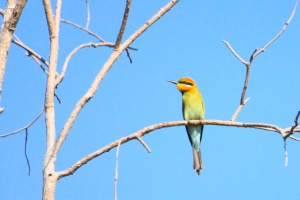




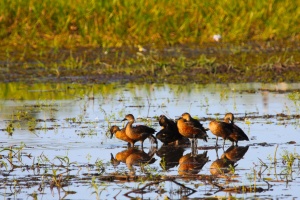










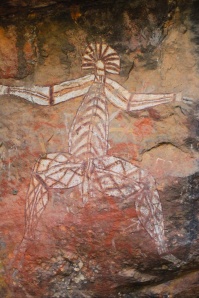
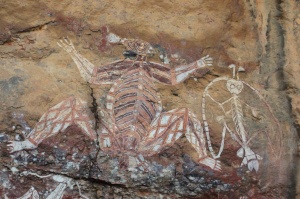

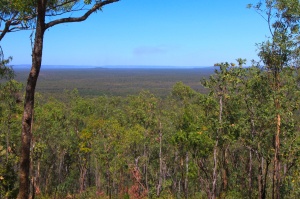
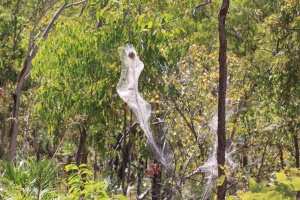



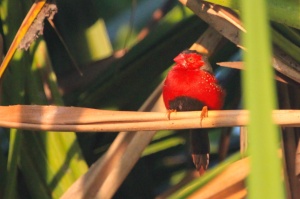



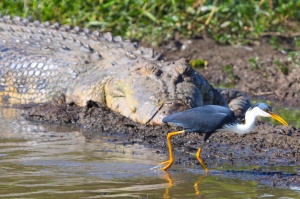
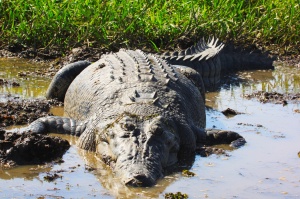

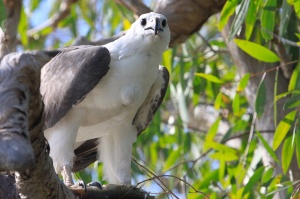
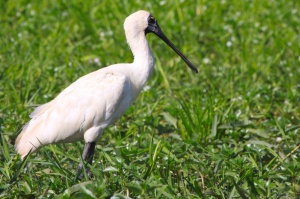
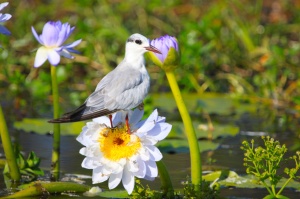
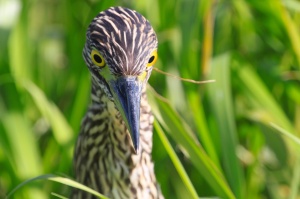
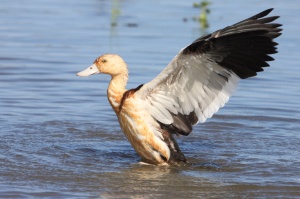


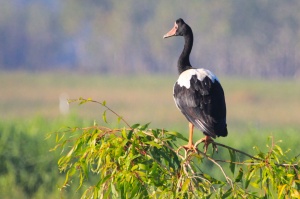


Fascinating descriptions, Paula. Loving reading about your adventures.
And enjoying all the birds!
Hi fantastic website! Does running a blog like this require a
large amount of work? I have absolutely no knowledge of computer programming but I was hoping to start my own blog soon. Anyways, should
you have any suggestions or tips for new blog owners please
share. I know this is off topic but I just wanted to ask.
Appreciate it!